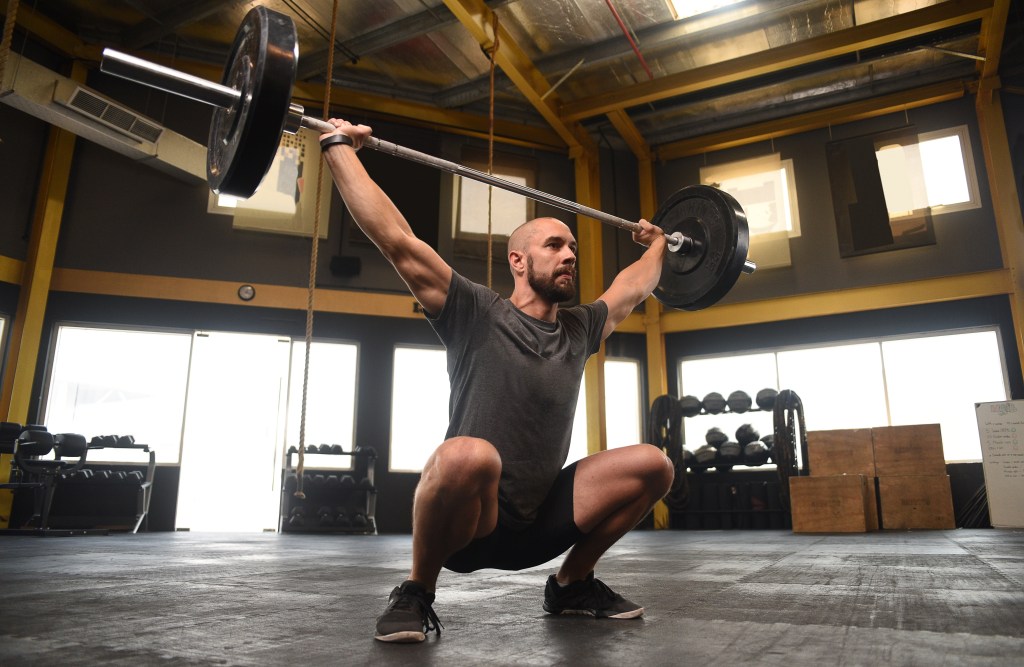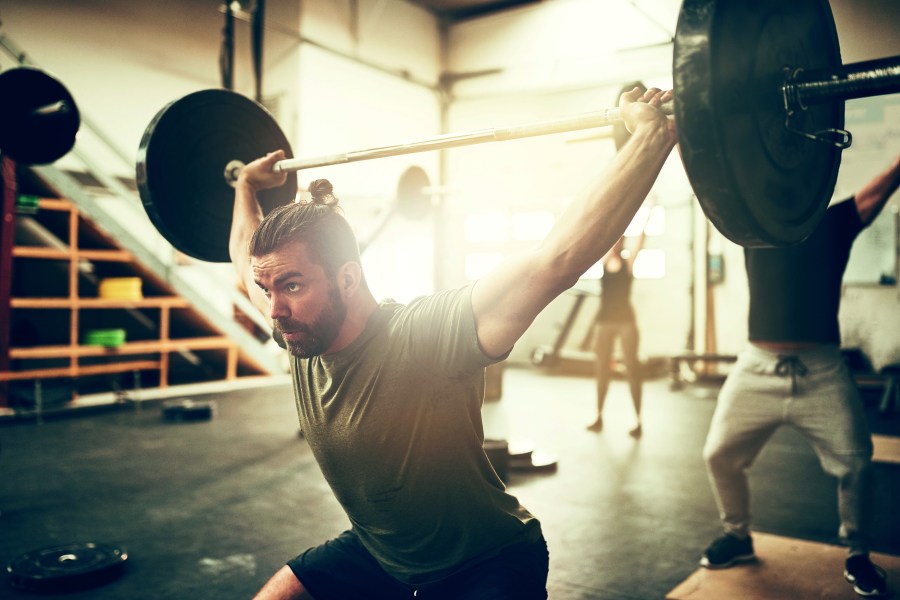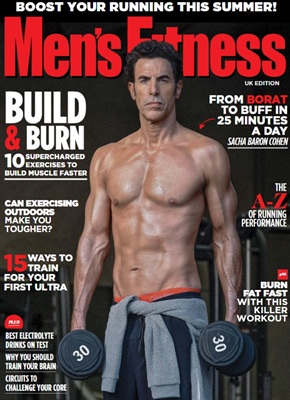Master the overhead squat (no easy task) for shoulders of steel, a rock-strong core and next-level mobility
If you want to ramp up fat loss on your next leg day, overhead squats work just about every muscle in your body, spiking your metabolism for a considerable calorie burn. The overhead load will also help alleviate tight pecs, and force your core into stabilising action – building a rock-hard set of abs in the process.
Practise the movement with no weight to begin with (arms in the air) and build up very gradually – broomstick, then empty bar, then some light plates on either end. This is an advanced move that takes time to master. The CrossFit Journal recommends the following 5-step process.

- Start only when you have a strong squat and use a dowel or PVC pipe, not a weight. You should be able to maintain a rock-bottom squat with your back arched, head and eyes forward, and body weight predominantly on your heels for several minutes as a prerequisite to the overhead squat. Even a raining bar is way too heavy to learn the overhead squat.
- Learn ‘locked-arm dislocates’ or ‘pass-throughs’ with the dowel. You want to be able to move the dowel nearly 360 degrees, starting with the dowel down and at arms-length in front of your body, and then move it in a wide arc until it comes to rest down and behind you without so much as slightly bending your arms at any point in its travel.
Start with a grip wide enough to easily pass through, then repeatedly bring the hands in closer until passing through presents a moderate stretch of the shoulders. This is your training grip. - Start the overhead squat by standing straight and tall with the bar held as high as possible. You want to start with the bar directly overhead, not behind you, or, worse yet, even a little bit in front.
- Very slowly lower to the bottom of the squat, keeping the bar fixed overhead. Have a training partner watch from your side to make sure that the bar does not move forward or backward as you squat. If you cannot keep the bar from coming forward, your grip may be too narrow.
- Practise the overhead squat regularly and increase load in tiny increments. There’s no benefit to adding weight if the dowel, and later the bar, cannot be kept in the frontal plane.








